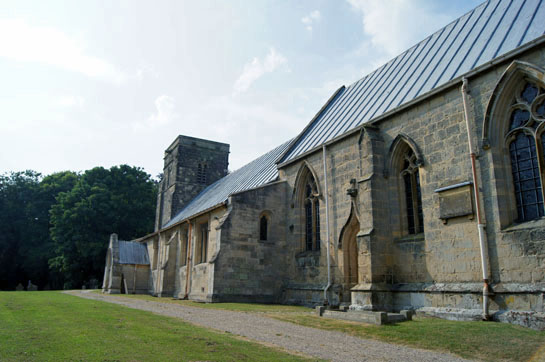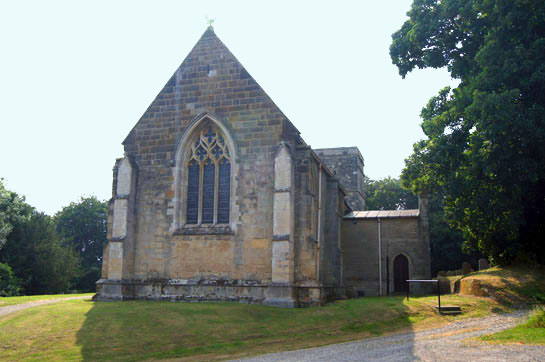|
Alphabetical List |
|
|
|
|
|
|
|
County List and Topics |
|
|
|
Please sign my Guestbook and leave feedback |
|
|
||||||||||||||||
|
So to the font. The church’s information board claims a common theme for the scenes depicted on the font: the fall of Man and his gaining redemption through patience and suffering. No gain without pain, it seems! The rarest depiction is of St Andrew enduring crucifixion on a saltire cross. The rest are quite common themes: the temptation of Adam & Eve (a theme shared with Cowlam font), St Margaret of Antioch, the martyrdom of St Lawrence on his griddle and a Tree of Life. There is also a rather odd-looking dragon thrown in for good measure. Overall, it is an unsophisticated piece - again very like Cowlam but without the total naivety of the font carvings at North Grimston in the East Riding Group. |
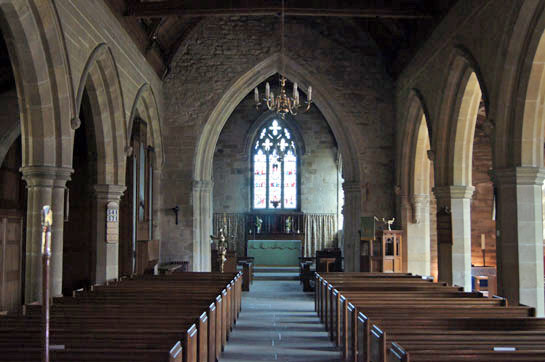 |
 |
|
Left: Looking towards the east end. Right: No, this is not the Norman font! It’s the Victorian one that’s in use today. It is, I suppose, not better nor worse than hundreds of others but it is so well-mannered and “safe” compared with the Norman one! If fonts were produced in factories and sold via catalogue I suspect this would be a best-seller! |
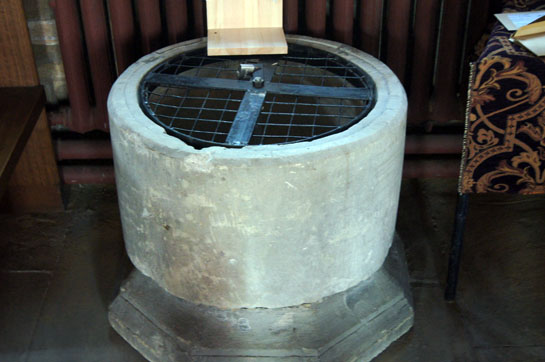 |
 |
|||||||
|
Left: The second of Langtoft’s fonts. The churchwarden explained to us that a church is only allowed to have one font. Apparently you get round this by declaring - verbally - that the extra ones are not fonts any more. No, I’m not sure I “get it” either! Right: The Norman font is kept in the south west corner of the church and has pride of place, complete with its own little spotlight (that makes photography more difficult rather than more easy, as you can see)! In my experience most churches with Norman fonts fully know their value to historians and “church crawlers”, are proud of their stewardship, and provide as much information as they can. Langtoft is no exception. |
||||||||
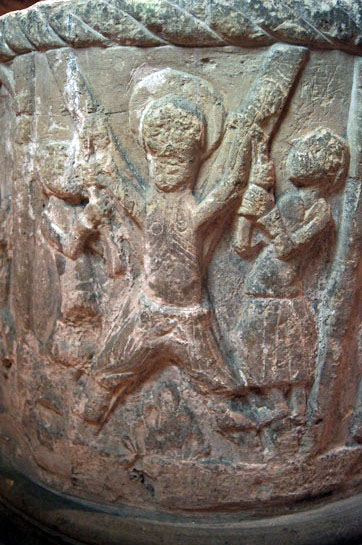 |
||||||||
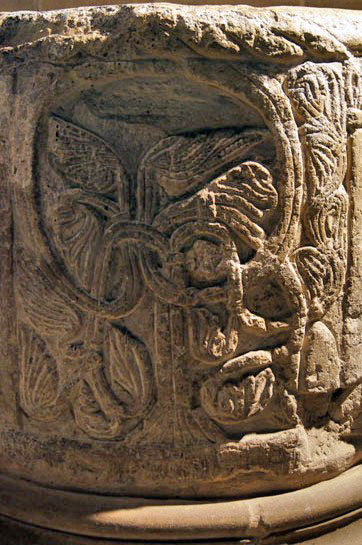 |
||||||||
 |
||||||||
|
I suppose you would hardly know that these three pictures are of the same font but in fact they just show the difficulties with photographing a font in difficult light. The ambient light was poor and the little floodlight meant that each side received differing degrees of light and I can vouch for the fact that normal camera flash washed out all the detail of church carvings. So what you have here is my desperate efforts to make the designs on each side visible, at the expense of accurate colour reproduction. Left: The rare image of St Andrew being crucified on a saltire (that is, diagonal) cross. Centre: The Tree of Life Right: The rather unspectacular dragon |
 |
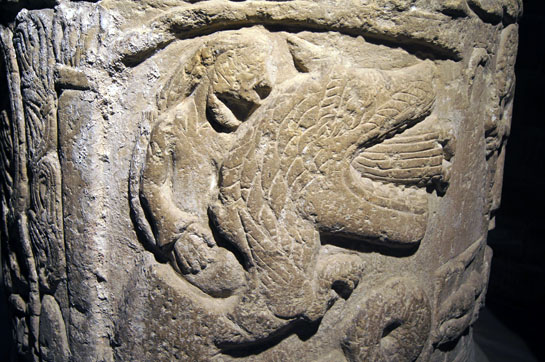 |
|
Left: The temptation of Adam & Eve. Eve (to the left) take fruit from the serpent entwined within the Tree of Knowledge. Adam already clutches his. Conflating events rather, both Adam and Eve are already clutching leaves to cover their nakedness. The Tree of Life to its right is perhaps meant as a counterpoint to this scene. Right: St Margaret of Antioch bursts from the side of the dragon that had eaten here, showing the triumph of good over evil. What with two martyrdoms and the Fall depicted on this font, the carver obviously felt that a bit of optimism about the human condition was in order! |
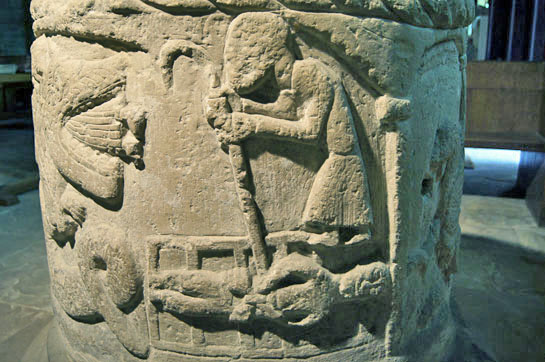 |
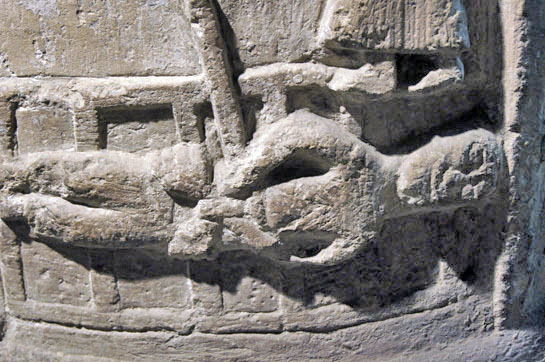 |
|
Left: The unfortunate St Lawrence is roasted on his griddle as another tormentor adds to his pain with a spear of some sort. Right: Close up of St Lawrence. In general, sculptors and artists right through the Norman and mediaeval periods were unwilling to depict any kind of pain on the faces of the martyrs. Perhaps it signified the knowledge that the victims would shortly be in Heaven. |
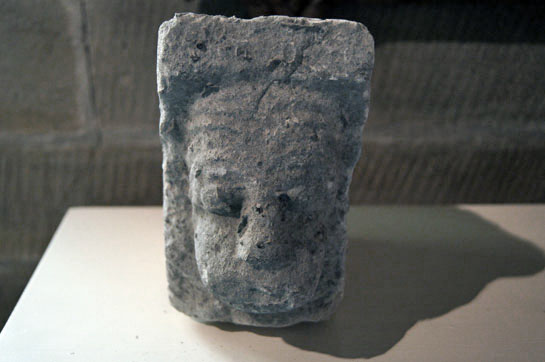 |
 |
|
The best indication that there was a Norman church here is not the font itself, which came from Cottam, but these fragments on display in the church. Left: An unmistakable Norman corbel. carved corbels were common in the area. Right: I’m not sure what this is but, again, it clearly comes from Norman church. |
|
|
||||||||||||||||||||
|
|
